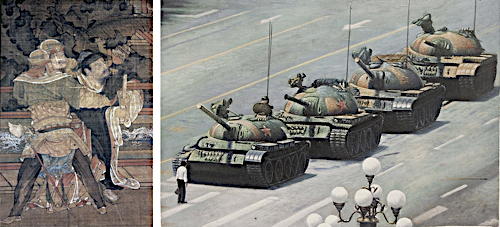Human Rights in China from Classical Times through the 18th Century: A Historical and Cultural Survey

Professionals in the humanities, law, business, government, the social sciences, and history frequently need to understand and assess current human rights practices in China as well as possibilities for the future of human rights there. Yet, to make such an assessment requires some understanding of the ways in which questions of law, justice, equality, and open speech were framed, conceived, and contested in Chinese history. This course spans two millennia of visual and textual material with the aim of introducing students to the images, the topics, and the terms that dominated debates relating to human rights issues in classical, medieval, and late imperial China. Students will become familiar with relevant materials through readings and lectures, with lectures making extensive use of visual documents (paintings and artifacts) and select passages from historical sources.
The course begins with a consideration of opposing views on the universality of human rights, as well as the politics of the historical representation of Others. The bulk of the course is devoted to case studies of key moments in the development of human rights debates over Personhood, Equality, Justice, and Freedom of Speech in China. We shall read some of the key arguments from the classical, medieval, and early modern periods, and consider as well the institutionalization of these arguments and concepts in political structures, as well as in social and artistic practice. Because the modern discourse of human rights evolved out of Enlightenment debates in England and Europe, the course culminates in a special section on debates on human rights involving China during the Enlightenment.
Requirements: Requirements include 3 quizzes; an annotated bibliography of readings relevant to one of the topic areas covered in the course; and a short paper (5-7 pages).
Estimated cost of materials: No cost for materials.
Category for concentration distributions: C. Asia (includes China, Japan, India, South and Southeast Asia, and the Pacific), 3. Early Modern.